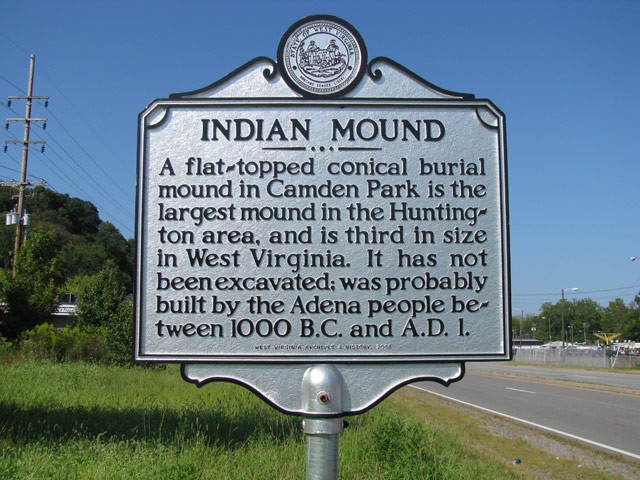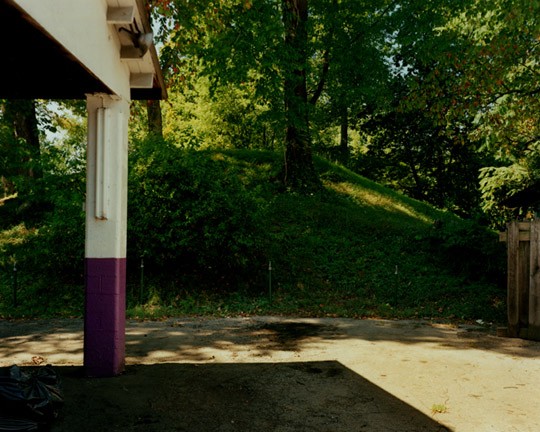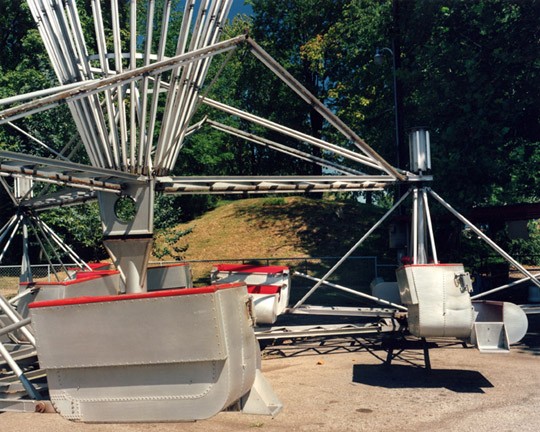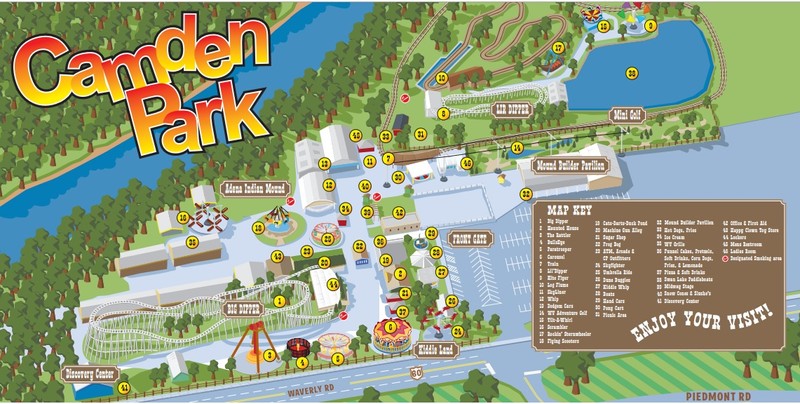Adena Mound at Camden Park
Introduction
Text-to-speech Audio
Images
Historical marker near mound.

Photo of the mound.

Photo of the mound.

Map of Camden Park showing location of mound within park.

Backstory and Context
Text-to-speech Audio
This Adena mound is located in the heart of Camden Park, a small amusement park just outside of Huntington, West Virginia, near the junction of Twelve Pole Creek and the Ohio River. is the third largest Native American mound in the state of West Virginia. The mound has never been excavated, but it is believed to have been built by the Adena Culture which flourished in the area between 800 B.C. to around 100 A.D. Over 424 Adena mounds have been formally documented in West Virginia and it is likely hundreds more had existed in the past. Historical and archaeological studies show that many other mounds used to exist on the banks of the Ohio River near the Camden Park mound, but over time have been destroyed by the creation of roads, buildings, and railways.
It is important to note that “Adena” is not the name that these prehistoric Native American called themselves. It is only the term by which archaeologists refer to them based on their material remains and cultural practices. The name “Adena” comes from the estate of Governor Thomas Worthington in Chillicothe, Ohio. On his estate there was a large mound which was one of the first Adena mounds to be excavated. It is very likely that we will never know what these peoples truly called themselves.
The Adena culture thrived in Southern Ohio, Western West Virginia, and Kentucky from 800 B.C. to around 1000 A.D. The predecessors and ancestors of the Adena peoples (known as the Archaic Culture) were highly mobile hunter-gatherers who subsisted primarily on hunting wild animals and finding wild plants to eat. They would travel in relatively small groups and live in temporary campsites throughout the year. However, around 800 B.C. these peoples began to become less mobile and created new technologies. Around this time is when scientists begin to refer to the prehistoric Native Americans of the area as the Adena Culture. They were the first people in the region to settle in small villages, cultivate crops, make pottery, establish trade over long distances with other Native Americans, and create mounds and other earthworks to bury their dead and use for ceremonies.
It is believed that the reason the Adena peoples gave up their highly mobile hunting and gathering lifestyle is because they learned how to farm and create pottery. Adena peoples lived in small villages near their gardens and cultivated a variety of native plants, including squash, sunflower, sumpweed, goosefoot, knotweed, and maygrass. They used the pottery vessels they made to cook these crops and also to store crops for future use. Having a stable food source nearby and the ability to store and save food made it possible for the Adena to stay in one place for longer periods of time.
After becoming more sedentary, the Adena began building mounds and earthworks near their villages. These monuments ranged from small conical shapes to large and elaborate geometric earthworks which were used for special rituals and ceremonies. The Camden Park mound is much larger than most other Adena mounds. There are several more documented mounds and earthworks in the area. A series of six small Adena Mounds exist in the Central Park of Ashland, Kentucky. The second-largest Adena mound in the state, the South Charleston Mound, is less than an hour's drive away. Further north in Moundsville, West Virginia, is the Grave Creek Mound, the largest Adena Mound in the state.
Cite This Entry
Mills, Joshua, Kaleb Frye, and Steven C. Straley on behalf of Appalachian Studies Association . "Adena Mound at Camden Park." Clio: Your Guide to History. April 15, 2017. Accessed April 2, 2025. https://theclio.com/entry/1338

